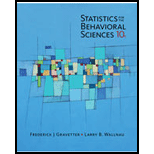
Concept explainers
In a classic study in the area of problem solving, Katona (1940) compared the effectiveness of two methods of instruction. One group of participants was shown the exact. step-by-step procedure for solving a problem and was required to memorize the solution. Participants in a second group were encouraged to study the problem and find the solution on their own. They were given helpful hints and clues, but the exact solution was never explained. The study included the problem in the following figure showing a pattern of five squares made of matchsticks. The problem is to change the pattern into exactly four squares by moving only three matches. (All matches must be used. none can be removed, and all the squares must be the same size.) After 3 weeks, both groups returned to be tested again. The two groups did equally well on the matchstick problem they had learned earlier. But when they were given new problems (similar to the match- stick problem), the memorization group had much lower scores than the group who explored and found the solution on their own. The following data demonstrate this result.
| Memorization of the Solution | Find a Solution Your Own |
Incidentally, if you still have not discovered the solution to the matchstick problem, keep trying. According to Katona’s results, it would be very poor teaching strategy for us to give you the answer. If you still have not discovered the solution, however, check Appendix C at the beginning of the problem solutions for Chapter 10 and we will show you how it is done.
a. Is there a significant difference in performance on new problems for these two groups? Use a two- (ailed test with
b. Construct a 90% confidence
n=8
We need to find there is any significant difference in the two populations or not also find the confidence interval for the mean difference at 95% confidence interval.
Answer to Problem 15P
Solution:
- There is significant difference of the means of two groups
Explanation of Solution
We have provided with two samples with along with summary statistic of each sample. For the significance difference of the two sample mean will follow two sample t-test on the basis of the sample will construct critical point. Then will calculate r2 measure statistic that will give us the effect size measure. Then will conclude the measures will imply what.
Given:
We have provided two samples with summary statistic
For first sample,
For second sample,
Formula used:
For one sample of size n, we have below formulas
Mean=
SS=
Variance=
If there are two samples of sizes n1and n2 we have the following formula for pooled SD,
Sp=Pooled Variance
S12=sample variance of first sample
S22=sample variance of second sample
Denoting,
Se=standard error of the mean,
For the confidence interval at 95% level is,
Consider,
The t-distribution with df (n1+n2-2) =14
Hence the CI is,
Calculation:
a)
Here will proceed by the steps as,
Then will construct hypothesis as,
H0: there is no difference in means of two groups
Vs.
H1: not H0
Test statistic is
Calculation of the test statistic is,
Critical point at 90% confidence of t-statistic of df (n1+n2-2) = 14 is 1.76
Since,
|T| > 1.76 we reject H0 and can comment that there is significant difference in the mean calories of these two groups.
b)
Now the confidence interval is,
D=10.5-6.16=4.34
Conclusion:
We may conclude that there is significant difference of the means of these two groups also there is moderately high effect means. Also zero does not in the CI so that we have rejected H0: hence we can say that there is significant difference in the means of these two groups.

Want to see more full solutions like this?
Chapter 10 Solutions
Statistics for The Behavioral Sciences - Access
 Linear Algebra: A Modern IntroductionAlgebraISBN:9781285463247Author:David PoolePublisher:Cengage Learning
Linear Algebra: A Modern IntroductionAlgebraISBN:9781285463247Author:David PoolePublisher:Cengage Learning Algebra: Structure And Method, Book 1AlgebraISBN:9780395977224Author:Richard G. Brown, Mary P. Dolciani, Robert H. Sorgenfrey, William L. ColePublisher:McDougal Littell
Algebra: Structure And Method, Book 1AlgebraISBN:9780395977224Author:Richard G. Brown, Mary P. Dolciani, Robert H. Sorgenfrey, William L. ColePublisher:McDougal Littell Intermediate AlgebraAlgebraISBN:9781285195728Author:Jerome E. Kaufmann, Karen L. SchwittersPublisher:Cengage Learning
Intermediate AlgebraAlgebraISBN:9781285195728Author:Jerome E. Kaufmann, Karen L. SchwittersPublisher:Cengage Learning Algebra for College StudentsAlgebraISBN:9781285195780Author:Jerome E. Kaufmann, Karen L. SchwittersPublisher:Cengage Learning
Algebra for College StudentsAlgebraISBN:9781285195780Author:Jerome E. Kaufmann, Karen L. SchwittersPublisher:Cengage Learning Trigonometry (MindTap Course List)TrigonometryISBN:9781305652224Author:Charles P. McKeague, Mark D. TurnerPublisher:Cengage Learning
Trigonometry (MindTap Course List)TrigonometryISBN:9781305652224Author:Charles P. McKeague, Mark D. TurnerPublisher:Cengage Learning




